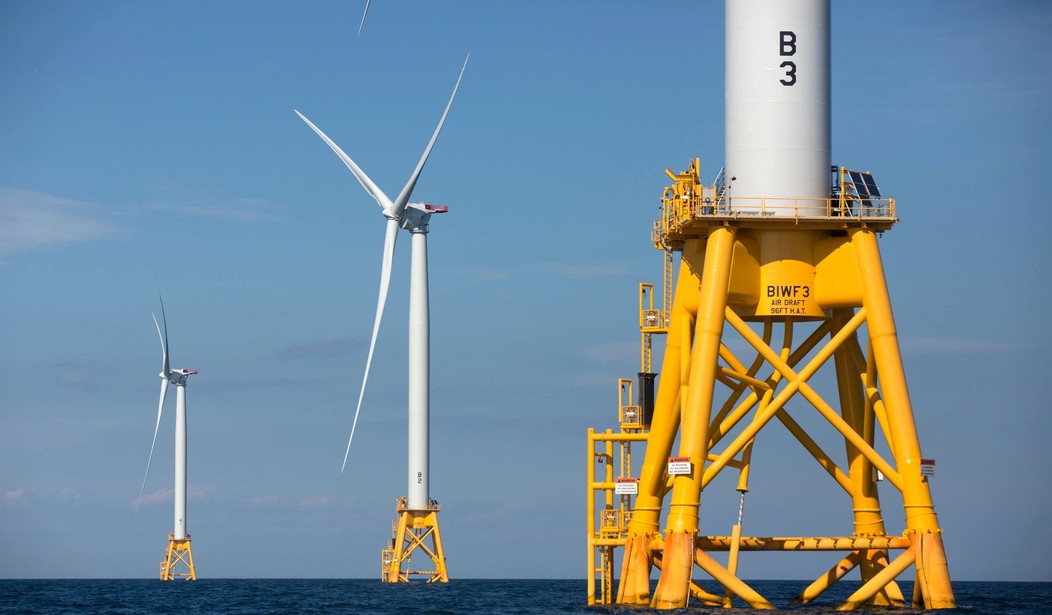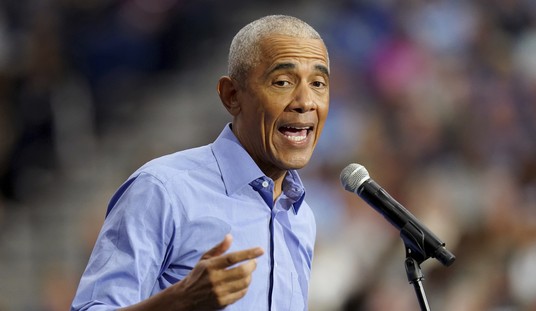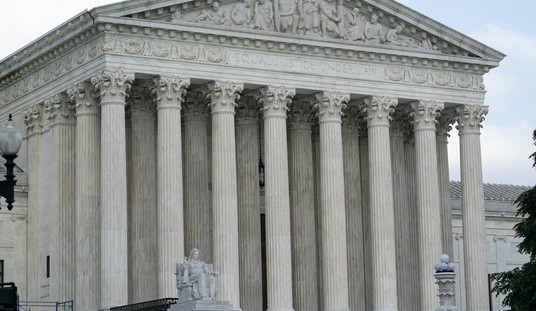Reality is a harsh mistress.
Proponents of several offshore wind projects are finding this out the hard way. There are harsh economic realities involved in any major infrastructure projects such as these, and a good rule of thumb in the energy sector and elsewhere is that if it needs massive government subsidies, it's probably not economically feasible. That's the stumbling block for many, if not all, of the various "renewable" energy schemes favored by climate scolds throughout the developed world.
Note that I specifically cite the "developed world." The developing world can't afford these boondoggles. Turns out that now a bunch of UK-sponsored offshore wind projects are also meeting these realities.
The UK government’s strategy for tackling climate change received a major blow in May when Danish developer Ørsted announced that adverse economic developments had halted its 2.4 gigawatt (GW) Hornsea 4 wind farm in the North Sea.
The government aims to generate at least 43GW of offshore wind power (current capacity is 14.7GW) and 95% of all energy from renewable sources by 2030.
These targets are now in jeopardy. The cancellation of Hornsea 4 follows a similar decision by Swedish developer Vattenfall, which stopped work on its 1.4GW Norfolk Boreas wind farm in 2023.
What is forcing renewable energy developers to pull out when they are due to make their final investment decision?
Note that "The Conversation" is a pro-climate-panic site, a site with an agenda to support these boondoggles - and thanks to writer Thomas York's dropping a few truth bombs, they are still forced to admit the economic realities. Points for that.
Raw materials are a big part of the problem, and what The Conversation doesn't mention is that these ill-advised projects, by their growing demands for steel, aluminum and copper, are further driving the increases in price of these materials, not to mention all of the rare earth metals, plastics (mostly derived from petroleum) and other materials that are required.
Building a wind turbine requires significant amounts of steel, copper, and aluminium, all of which doubled or tripled in price between 2020 and 2023. Turbine manufacturers have raised prices in an effort to recover recent losses. This affects the profitability forecasts of wind energy developers like Ørsted and the viability of each of their projects.
Impending national and international net zero targets also mean that developers globally are having to make earlier investments in transmission infrastructure. An exponential increase in demand for scarce high-voltage cabling has already led to high-profile cancellations of offshore wind farms in the US.
There are other problems, as well. Turns out that when you build things offshore, you know, in water, you need ships to move things.
Developers need boats to build offshore wind farms. Here lies another strain on the timescales of developers.
Ørsted ceased work on its 2.2GW Ocean Wind development zone off the coast of New Jersey in 2023, citing a vessel delay in its decision to cancel the project.
According to the advocacy group WindEurope, demand for vessels capable of installing foundations and turbines and laying cables will outstrip availability within the next five years. The gap between the two is forecast to skyrocket between 2028 and 2030.
Why are these issues only now coming to light, when the various projects in Europe and on America's east coast are well underway? Because, in part, the various governments have been hiding them behind a wall of subsidies.
Read More: German Fairy Tale Forest Gives Way to 'Green' Energy Windmills
Look What Happens When Solar and Wind Power Become 'Stranded Assets.'
These projects were never economically feasible, and they never will be; any such project that requires taxpayer subsidies never will be. And in this specific case, wind power, it's worse than that. The climate scolds claim to care about the environment, even though, as I'm fond of pointing out, few of them ever spend any time out in the environment. But here's another harsh reality: Land use. A 200 megawatt wind power farm requires 13 square miles covered with big, ugly, raptor-killing windmills. A natural gas plant with the same capacity would take up roughly a city block, and would also dispense with the need to find a place to store all of those worn-out, unrecyclable carbon-fiber windmill blades.
Meeting the climate scold's goals for wind and solar power generation would eat up land the size of one or two Midwestern states. That's not feasible. In fact, it's laughable.
Despite the claims of the greens, wind and sunshine may be free - but using them to generate electricity is not. It costs trillions, in materials, in labor, in infrastructure, and in land use. Even then, what we are left with is low energy density, unreliable, and intermittent power. Spain recently learned a hard lesson about this; there's no reason for the United States to have to learn it as well.
Grid-scale wind and solar power aren't economically viable. Barring some unimagined breakthrough in technology, they never will be. If the climate scolds were really concerned about human CO2 and other emissions, they'd be championing nuclear power; they aren't, so that tells you all you need to know.














